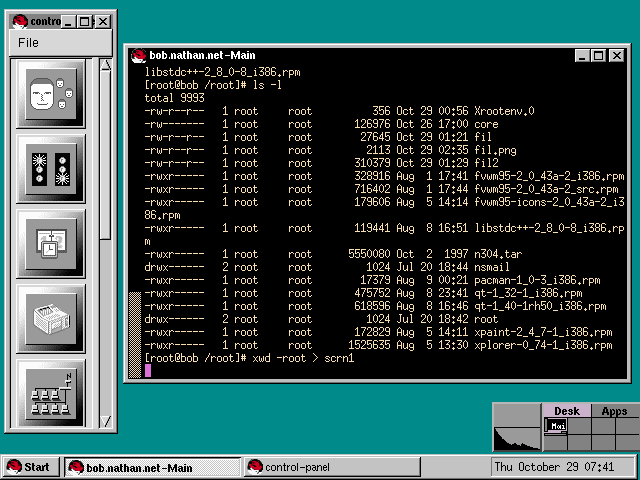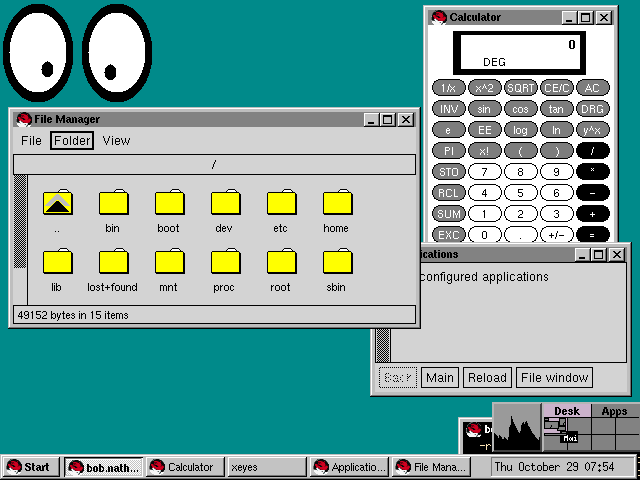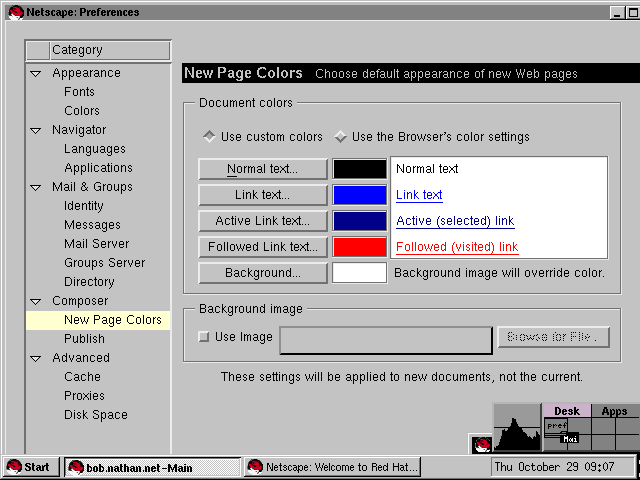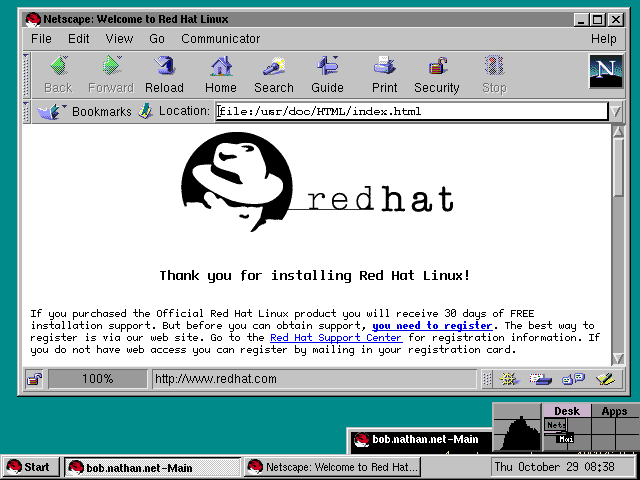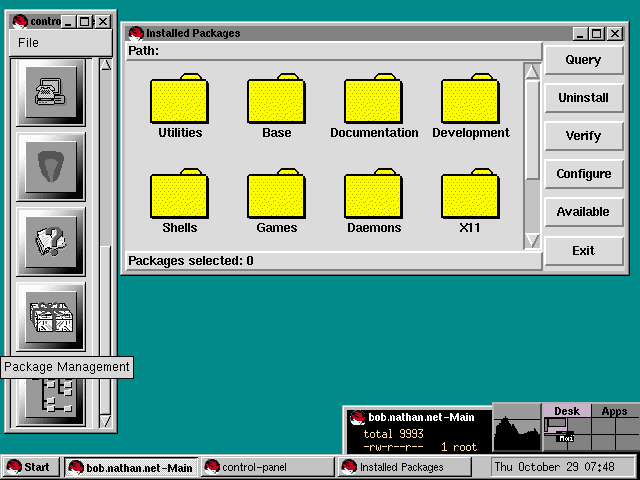|
|
Location: GUIs >
Linux / Unix >
Redhat Linux 5.0 Xfree running FVWM 95 RedHat Linux 5.0 Linux, and other Unixes don't require a GUI and can often be run just fine from a command-line interface. They do, however, have a graphical system known as the X Windowing System or simply "X" . The interesting thing about X is that because Unix is a multi-user network operating system X was developed with the ability to display program output on single or multiple remote or local graphical terminals. X accomplishes this by abstracting the user interface at the network level. Windows, Macintosh, OS/2, and most other personal computer operating systems only abstract the graphical user interface at the hardware level. Hardware level abstraction means that the program running does not need to worry about talking directly to the video card. The program instead makes request to the operating system to draw objects. The operating system passes these requests on to a video driver which contains all the details of exactly how to talk to the video display. This abstraction means that any computer running one of these OSs can use any video card from any vendor as long as the vendor provides driver software for the particular OS. By taking this one step further and abstracting the GUI at the network level, X windowing programs not only do not have to worry about what video display adapter is present, but also do not have to worry about what machine the display adapter is in. The X-server program is the program responsible for taking drawing requests from programs on the local or remote computer, talking to the video display, and returning information to the program from the mouse or keyboard. Additionally, the X-server requires a separate program called the window manager that handles window controls such as the title bar, minimize or maximize buttons, controlling the resizing and moving of windows, and providing methods of launching applications. Red Hat Linux 5.0 is packaged with a free X server program called XFree86, and by default uses a window manager called FVWM95. Other distributions may have different X server programs and often have any one of a number of window managers.
The xterm program emulates a command line in the graphical environment. This is necessary because many commands are only available from the command line. The control panel can be used, mainly by the root user, to view and change system settings or edit user account information.
In this example xfm, a file manager, is running. Notice the scroll bar is on the LEFT side of the window. To use this scroll bar, one must click the right mouse button to move down and the left mouse button to move up.
There are large number of other programs for X, more than I can show here. Hopefully this gives some idea of what the default Redhat 5.0 system looks like, however this brief example does not really do Linux justice. The X interface is very highly customizable. In fact RedHat Linux 5.0 includes alternate window managers that make the user interface look like NextStep, or Motif which looks sort of Windows 3.1ish but more 3D. Additionally, Redhat 6.0 uses GNOME as the default window manager and has KDE as an option. So before I get flamed for showing only cheesy screen shots, here are the links to these really cool window manager programs: |
